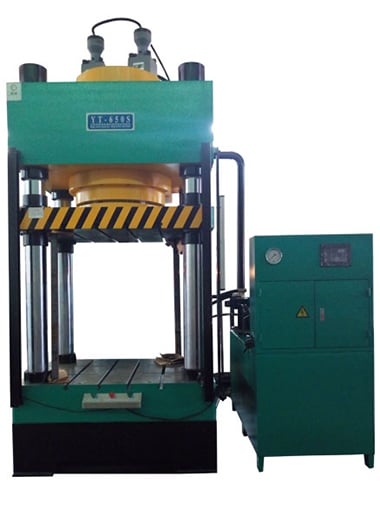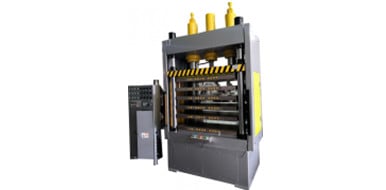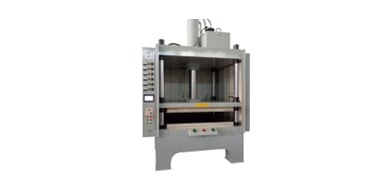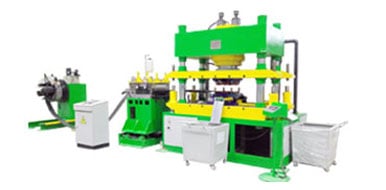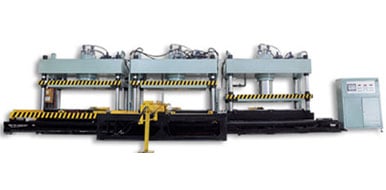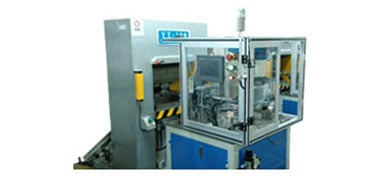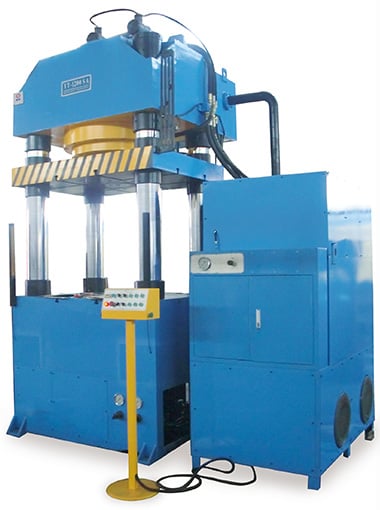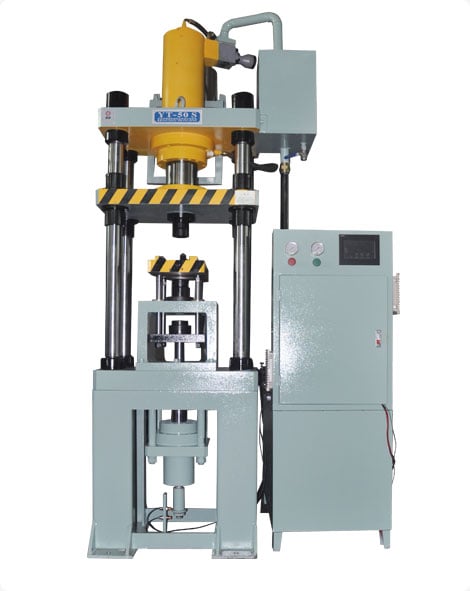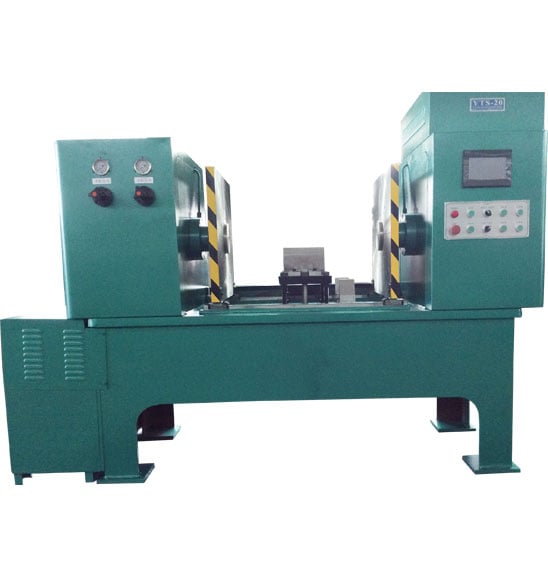How Much Pressure Should a Hydraulic Press Have?
time:2023-08-26 views:(点击 1,102 次)Hydraulic presses are machines capable of creating large amounts of force, making them useful tools in industrial settings, such as for forming metal parts.
Use of a hydraulic pump allows oil to be forced into two cylinders: one holding the ram, and one housing the plunger - creating pressure between them that ultimately crushes items placed within.
1. Tonnage
Hydraulic presses are powerful machines that utilize hydraulic fluid to generate and transfer immense forces, often used for metalworking, plastics and composites manufacturing, construction projects as well as in laboratories for product development and quality control purposes.
Tonnage refers to the amount of force a hydraulic press can exert. It is typically measured in tons, although this value may also be expressed as pounds per square inch (psi).
To calculate the tonnage of a hydraulic press, you must know how much fluid pressure it can produce. This information can be found by looking at its dimensions and pressurized hydraulic fluid pressure; manufacturer specifications or formulae also offer this data; for instance multiplying fluid pressure in pounds per square inch times piston's cross sectional area gives an approximate figure.
When determining the tonnage of a hydraulic press, it is crucial to take into account how much energy is necessary to form each part. This will allow you to choose an appropriate die set - for instance a smaller die may require more energy than its larger counterpart. Furthermore, reverse tonnage needs to be considered; although its exact amounts cannot be predicted accurately ahead of time it usually ranges between 10%-25% of forward tonnage.
When calculating the tonnage of a hydraulic press, be sure to consider both its force of piston as well as the actual tonnage (maximum force the machine can exert) of your machine. Knowing this difference can have an impact on how effective your machine is; for example a long stroke press may be capable of exerting more force while being less energy-efficient than shorter stroke machines.
2. Length of Stroke
A hydraulic press stroke defines how far a piston or plunger extends in order to apply pressure, and can be customized using different stroke types such as double acting and single acting cylinders. Furthermore, its height may also be altered with double acting or single-acting cylinders in order to vary force applied; furthermore there are telescopic hydraulic cylinders which allow users to increase or decrease it during a stroke stroke.
Hydraulic presses can exert enormous amounts of force, making them ideal for industrial applications such as metal part forming. Furthermore, hydraulic presses can be easily controlled to deliver precise amounts of force as opposed to mechanical presses which rely on crank mechanisms and motor-driven flywheels to generate pressure.
Hydraulic presses are simpler than their mechanical counterparts and have significantly fewer moving parts, leading to decreased maintenance costs and greater uptime. Furthermore, most moving components in hydraulic presses are standard components which can be purchased easily at low costs without dismantling the machine.
Hydraulic presses also have the added advantage of being able to deliver full tonnage throughout their stroke, unlike mechanical presses which may not maintain their maximum tonnage throughout, potentially leading to shear in dies and decreasing blanking tonnage capacity.
3. Length of Plates
Hydraulic presses rely heavily on their plates to exert force during production, and plates may be adjusted by shortening or lengthening to adjust pressure accordingly. Ram and plunger length also have an impactful force application to materials, measured either in pounds per square inch (psi) or tons. To determine hydraulic pressure, multiply piston area by cylinder area then divide by 2,000 to calculate pounds per square inch force before dividing by 1000 for tons measurements.
Hydraulic presses can be found across industries, from metal fabrication to bearing pressing. With their ability to produce thick parts with high precision using adjustable dies, pressure, stroke speed, and die changes; hydraulic presses are flexible enough to meet any production operation and production process imaginable. There are various types of hydraulic presses on the market; each offers distinct benefits and drawbacks; for instance a four-column hydraulic press offers even pressure distribution while straight-side presses offer rigidity suitable for progressive die applications.
Presses use high-pressure hydraulic oil as the power source, with oil flowing from a pump through integrated cartridge valve blocks and cartridge valve blocks that direct it directly into hydraulic cylinders. Pascal's principle states that pressure in closed systems acts uniformly on all points at equal rates and magnitude; mechanical force pushes against blank material causing high-pressure forming to occur; however decompression shock must be managed carefully to protect lines and fittings especially during blanking when the ram breaks through creating gaps in between blanking panels.
4. Width of Plates
A hydraulic press's plates width is essential in determining how much pressure can be applied to an area. Small plates require much greater effort to apply the same force than their larger counterparts, which is why you should only use plates of appropriate sizes and dimensions that match up perfectly for your task. Furthermore, making sure all plates are parallel will help prevent too much or too little pressure being exerted upon the workpiece by your hydraulic press.
Be mindful of the maximum working pressure a hydraulic press can achieve, usually measured in pounds per square inch (psi). A typical industrial hydraulic press may produce up to 1500 psi of pressure; however, its pressure may decrease with distance from center of cylinder to workpiece increasing.
Hydraulic presses can be extremely useful machines in metalworking, including bending, punching and stamping applications. They're effective at both low- and high-volume production; providing greater accuracy than manual machines while being quieter and simpler to operate than mechanical presses.
No matter if it is for personal or professional use, selecting an ideal hydraulic press requires careful consideration. Be sure to select one with sufficient tonnage, stroke length and plate width specifications to meet your requirements; additionally it's wise to read over its user manual prior to using it for the first time.
5. Thickness of Plates
A hydraulic press is a machine capable of applying extreme amounts of force to workpieces, typically used for metal forming, stamping and punching applications. Its main components include a pump and hydraulic ram which moves towards the workpiece when its handle is cycled - up to 30 tons of pressure can be exerted on this piece of machinery! In addition, other uses for it may include flattening steel metal sheets, pressing bearings into casings or straightening bent metal plates.
Hydraulic presses exert force through tonnage, stroke length, width of plates, and thickness of material. Selecting the appropriate tonnage for every task can significantly influence product quality - many manufacturers utilize laboratory presses as production test beds while commercial hydraulic presses typically come equipped with more forceful capabilities.
Engineers calculate exactly how much force is necessary to form a certain size metal plate, and use this information when designing hydraulic systems. Pascal's principle allows engineers to understand the power of these systems: any pressure change applied anywhere within an incompressible fluid will be transmitted equally throughout its system - making relatively small cylinders capable of moving very heavy loads.
One can measure the pressure in a hydraulic system with a pressure gauge; however, for more accurate results it would be wise to consult a professional. If no gauge exists then use this formula instead: Rated Force of Cylinder divided by 10,000 PSI on Pressure Gauge = Total Force.
Link to this article: https://www.ihydraulicpress.com/nsn/4338.html
Hot Articles
-
How to Make a Hydraulic Cider Press
If you want to produce large volumes of cider, a press is needed; typically this means using a rack and cloth style press. Hydraulic presses can sav……
-
Hydraulic Press Channel – How Much Does the Hydraulic Press You Tube Channel Make?
Lauri Vuohensilta of The Hydraulic Press Channel, with over 3.7 million subscribers, uses his family shop’s hydraulic press to destroy objects……
-
How to Make a Blacksmith Hydraulic Press
Blacksmiths traditionally relied on their hammers and brawn to change the shape of hot metal, but today many modern smithies employ hydraulic pres……
-
Hydraulic Press – Choosing the Right Hydraulic Press for Your Needs
Hydraulic presses are an incredibly useful tool for manufacturing. However, to find the ideal hydraulic press for your needs, you must consider both……
-
How Much Force Does a Hydraulic Press Exert?
Hydraulic presses can produce massive amounts of force, making them ideal for a wide range of applications. Their design relies on Pascal’s ……
-
How Much Are Hydraulic Presses?
Hydraulic presses are pressure-generating machines used to crush or form material such as bearings and bushings or even solid natural diamonds. Th……
-
How to Make a Hydraulic Heat Press Machine
Hydraulic presses are unrivaled when it comes to creating complex shapes. Renowned for their versatile capabilities such as forging, stamping, cold ……
-
How to Make a Hydraulic Press With Syringes
Press down on one of the plungers of one of the syringes, and observe what happens. Repeat this for the other syringe. Syringe plungers feature sm……
Latest News
-
Who Makes Black Widow Hydraulic Press?
There is an array of hydraulic presses on the market, but not all are created equal. Before selecting one to meet your specific needs, it is crucial……
-
How Much Is a Hydraulic Press?
Hydraulic presses are powerful machines capable of exerting immense pressure. They operate on Pascal’s Law, which states that force applied to……
-
How Much Force Does a Hydraulic Press Exert?
Employing a hydraulic press to compress material is an efficient way to test its strength. A object’s strength can be determined through mea……
-
Hydraulic Press Channel – How Much Money Does the Hydraulic Press Channel Make?
If you enjoy watching things get crushed, then look no further. Launched in October 2015 in Finland, this channel features Lauri Vuohensilta and A……
-
How to Make Hydraulic Press Plates
Hydraulic presses are highly capable machines capable of shaping and deforming metals and other materials with extreme force, yet remain far easie……
-
How to Make a Hydraulic Briquette Press
Briquette presses use hydraulic devices that produce high levels of specific pressure on raw material, which is more efficient than using lever desi……
-
How Much Pressure Should a Hydraulic Press Have?
Hydraulic presses rely on Pascal’s law to effectively harness large amounts of force over short distances. They utilize two components ̵……
-
How to Make a Hydraulic Press With Cardboard
Hydraulics can be utilized in numerous applications, from hydraulic cylinders and arms, to presses. Hydraulic systems operate under the principle ……







